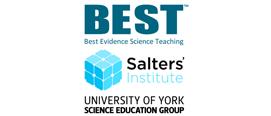- View more resources from this publisher
 Best Evidence Science Teaching
Best Evidence Science Teaching
Seeing in Colour
These diagnostic questions and response activities (contained in the zip file) support students in being able to:
-
Give an example of how coloured lights mix to make light of another colour
-
Explain how adding coloured lights together affects brightness
-
Describe how sunlight and daylight are different to yellow light
-
Explain how daylight / sunlight can be split into colours of the spectrum, whereas yellow light cannot
-
Explain how colours of light combine to make light similar to daylight, which is called white light
-
Describe how white objects reflect all the colours in white light
-
Describe how coloured objects selectively reflect particular colours in white light
-
Describe how coloured objects selectively absorb or reflect particular colours of light
-
Work out the colour a coloured object looks in light that is a different colour to the object (primary colours)
-
Work out the colour of an object that is a secondary colour, in red, green or blue light
The resources include details of common misconceptions and a summary of the research upon which the resources are based.
Download the zip file for all the questions and activities.
More resources like this can be found on the BEST webpage: Best Evidence in Science Teaching
Show health and safety information
Please be aware that resources have been published on the website in the form that they were originally supplied. This means that procedures reflect general practice and standards applicable at the time resources were produced and cannot be assumed to be acceptable today. Website users are fully responsible for ensuring that any activity, including practical work, which they carry out is in accordance with current regulations related to health and safety and that an appropriate risk assessment has been carried out.
Downloads
-
Resources.zip 6.49 MB
-
Teacher notes.pdf 1.02 MB




